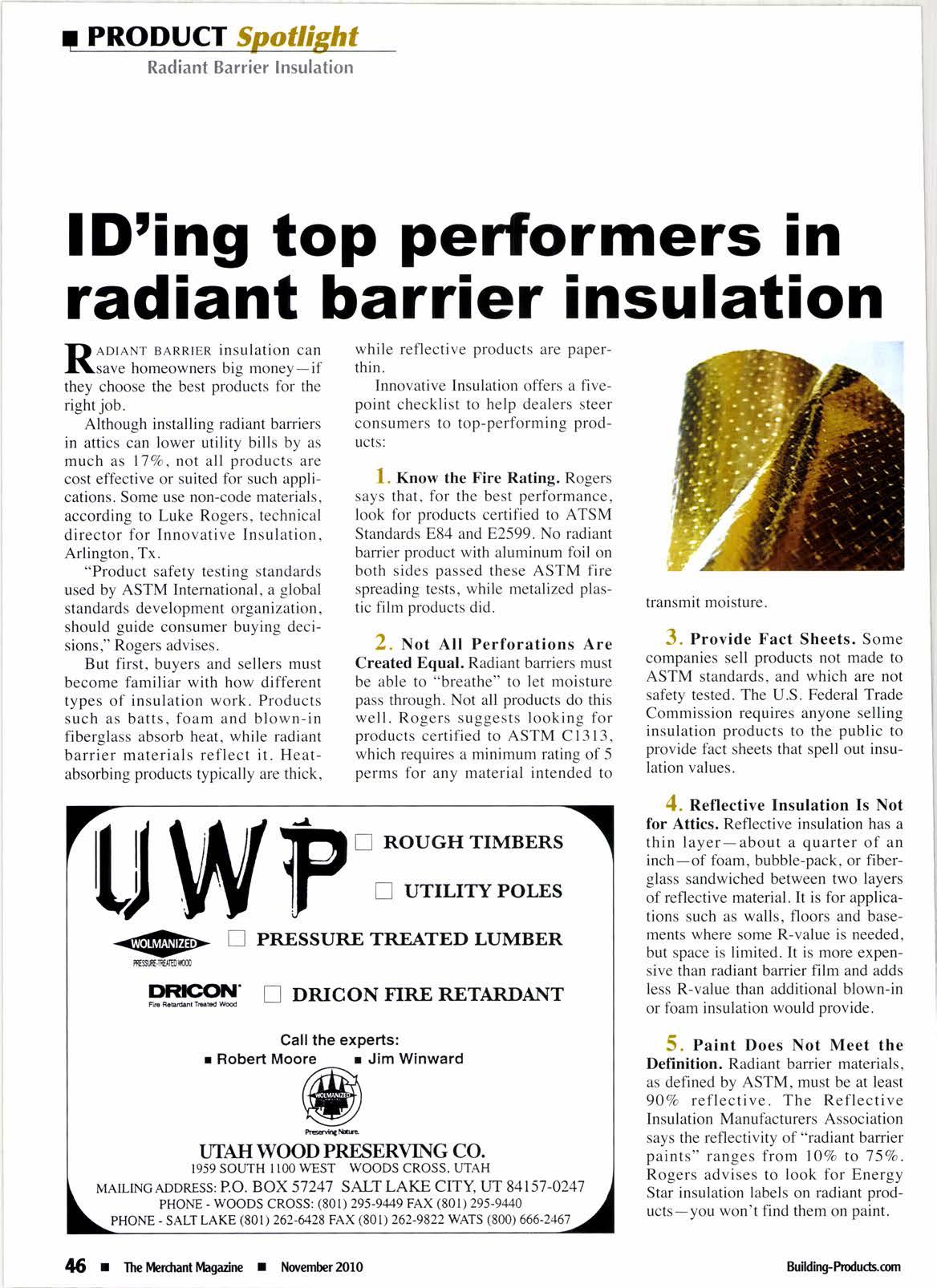
1 minute read
lDting top performers in radiant barrier insulation
D notnNr BARRIER insulation can I\save homeowners big money-if they choose the best products for the right job.
Although installing radiant barriers in attics can lower utility bills by as much as l7Vo, not all products are cost effective or suited for such applications. Some use non-code materials, according to Luke Rogers, technical director for Innovative Insulation, Arlington, Tx.
"Product safety testing standards used by ASTM Intemational, a global standards development organization. should guide consumer buying decisions," Rogers advises.
But first, buyers and sellers must become familiar with how different types of insulation work. Products such as batts, foam and blown-in fiberglass absorb heat, while radiant barrier materials reflect it. Heatabsorbing products typically are thick, while reflective products are paperthin.
Innovative Insulation offers a fivepoint checklist to help dealers steer consumers to top-performing products: l. Know the Fire Rating. Rogers says that, for the best performance, look for products certified to ATSM Standards E84 and 82599. No radiant barrier product with aluminum foil on both sides passed these ASTM fire spreading tests, while metalized plastic film products did.
2.tlotAll Perforations Are
Created Equal. Radiant barriers must be able to "breathe" to let moisture pass through. Not all products do this well. Rogers suggests looking for products certified to ASTM C1313, which requires a minimum rating of 5 perms for any material intended to

